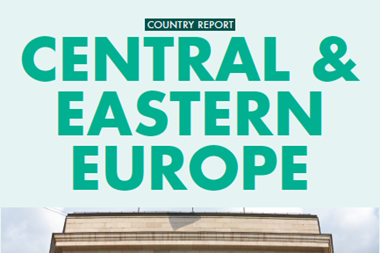A majority of Bulgarian citizens retiring between 2021 and 2037 will receive a pension of €26 or less despite reforms aimed at boosting savings, according to projections from Bulgaria’s labour and social policy ministry.
The ministry’s analysis of projected pension income – published alongside draft legislation for new types of pension payouts – showed that 70% of the first cohort of Universal Pension Fund (UPF) pensioners, retiring between 2021 and 2037, would receive a monthly pension of BGN50 (€26) or less, while only 10% would get more than BGN100.
Meanwhile, according to the ministry, payments from the first-pillar National Social Security Institute (NSSI) would be 18-20% lower than would have been the case if members had been insured exclusively in the state system, suggesting that members should consider the option of switching to the first pillar.
Since 2015, when switching was introduced, only around 10,000 UPF members and 900 members of the Professional Pension Funds (for workers in jobs that qualify for early retirement) have switched.
The Bulgarian Association of Supplementary Pension Security Companies (BASPSC) disputed the ministry’s interpretations and model assumptions.
The current pension contribution rate increased by 1 percentage point this year to 19.8% of wages, of which 5% goes to the second pillar UPFs.
There is a maximum monthly insurance ceiling, currently set at BGN2,600 with a 2% annual increase, above which taxes are due but no further pension or health insurance contributions are paid.
One point of dispute is that the ministry’s long-term projection of an 8% annual increase in wages, leading to a similar increase in the average insurable income, would by 2037 result in the latter exceeding the maximum insurable ceiling, while at the same time exaggerating the expected pension paid by the first pillar.
Overall the contributions cover less than 48% of current pensions expenditure, with the rest coming from taxes.
According to the BASPSC’s calculations, based on NSSI figures, the average real contribution rate to the pay-as-you-go first-pillar system amounted to 30% in return for a pensions income roughly equal to 41% of the working wage.
The BASPSC pointed out that, by the ministry’s own calculations for younger workers, those with 40 years of service would receive a 20% pension income from UPFs, despite the lower contribution rate.
Other discrepancies included the ministry’s use of a 5% contribution fee throughout its projections, even though this has been lowered to 4% for 2018 and will fall to 3.75% next year. The ministry also failed to take into account the increase in the retirement age, to 65 years for both men and women, according to the BASPSC.
The main issue, however, was the ministry’s use of average accumulated sums in pension funds.
According to Bulgaria’s Financial Supervision Commission, the country’s regulator for pensions and other non-banking financial services, there were around 3.7m registered as UPF members at the end of 2017 – some 1.35m more than those actually contributing according to NSSI data. The difference was attributed largely to the high level of economic emigration.
Payout proposals
Despite the dispute, Bulgaria is moving closer to finalising payout schemes for the country’s second-pillar pension system.
In its draft legislation, the ministry has proposed three types of payouts: a one-off lump sum, scheduled withdrawal, and lifetime (annuity) provision. It has also put forward the possibility of combining two or three provisions to diversify pension incomes.
Unlike the government’s last attempt to address payouts, in 2016, when it proposed and then shelved the idea of a common asset pool for second-pillar pensions, the latest version has proved relatively uncontroversial.
Notwithstanding its criticisms, the BASPSC has welcomed the payout proposals, including the programmed withdrawals and the provision of lump-sum payments, which it described as the correct solution for those members who were not able to accumulate sufficient sums as a result of a short period of fund membership, absence due to emigration, or their working in the ‘grey’ economy.
It suggested more options for inheritability of pensions, as well as the establishment of a principal guarantee to protect at least the value of nominal contributions.












No comments yet